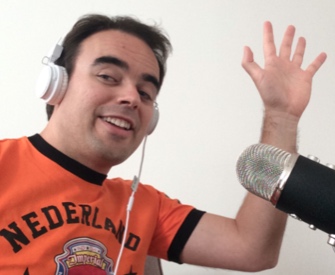Woef woef, miaaauw and boeeee – How do animals sound in DUTCH?
CLICK HERE to subscribe to my Youtube channel
Learning Dutch has a lot of different elements. And you probably didn’t think about this one:
Animals speak in their own language too!
Well at least … in each language the sound that an animal makes is different; so it is in Dutch.
In this article I want to look at the differences and show you how Dutch animals sound.
“The cows says … ”
If you learn Dutch as a second language you probably never got to this part of the language! These words are some of the earliest words children learn, and, because you learned Dutch as a second language, you probably never thought about it!
But you might be living in the Netherlands with Dutch kids. So it’s good to know how animals sound.
So, the words for animal sounds that you know sound normal to you because they feel natural. But what about the Dutch words for these sounds?
Not typically something you learn in a Dutch course, but, still, very useful to know.
We asked students of the BLC Summer School, but, first, why are they different?
What makes them sound different?
First, to make this clear: a cow does not make a different sound in France than in England. So how come we have given such different names to the universal sounds of animals?
We give sounds names, which means they go from sound to language. And a language is a very specific system with its own rules. And, of course, each language has different rules.
For example, Japanese words can’t begin with ‘kw’, so quacking in Japan is impossible. Or in Dutch a dog says WOEF or WAF. But the w-sound is, for example, uncommon for the French to pronounce at the beginning of a word.
Onomatopoeia
As a language teacher I am interested in these kinds of phenomenons, and this one is called onomatopoeia.
Onomatopoeia is the formation of a word that phonetically mimics or suggests the sound it describes and that forms part of the vocabulary of one or more natural languages. In other words, the word represents the sound.
Some animal names are also onomatopoeic; examples of birds which owe their names to the sounds they make are:
- Oehoe (Eagle Owl)
- Koekoek (Cuckoo)
- Kievit (Lapwing).
Other examples of onomatopoeia in Dutch are musical instruments such as bongo, conga and the maracas.
How does a bongo sound? Bon-go bon-go!
There are also objects which are named after the sounds they make, such as:
- toeter (a horn)
- klapschaats (a clap skate)
- poef (a pouffe),
- bom (a bomb)
- brommer (a moped).
How do animals sound in different languages?
Now it’s time for the animals. Let’s take a look at how a chicken sounds in different languages. The sound it makes is called in Dutch: kraaien (crows).
Chicken
- English: cock-a-doodle-doo
- Spanish: quiquiriquí
- Portuguese and French: cocoricó.
- Mandarin: wo-wo-wo.
- German: kikeriki.
- Korean: kkokkiyo
- Arabic: SiyaaH
- Icelandic: gaggalagó
Frog
- English: ribbit
- French: coa coa
- Chinese: guo guo
- Hindi: meko mek meko mek
- Hungarian: bre-ke-ke
- Japanese: kerokero
- Korean: gae gool gae gool
Dog
- English: Bow-wow, arf, woof, ruff ruff
- French: Ouah-ouah
- German: Wau-wau/wuff wuff
- Mandarin: Wang wang
- Arabic: Haw haw
- Danish: Vov
- Finnish: Hau hau
- Hungarian: Vau-vau
- Italian: Bau-bau
How do animals sound in Dutch?
So these were different in the different languages. So how do they sound in Dutch?
- Kip (chicken): tok tok
- Kikker (frog): kwaaak
- Hond (dog): waf or woef
This is how other animals sound in Dutch:
- Koe (cow): boe
- Schaap (sheep): meeh, or beeh
- Vis (fish) : blub blub
- Eend (duck): kwak kwak
- Haan (rooster): kukeleku
- Kat (cat): miauw
- Muis (mouse): piep
- Papegaai (parrot): lorre
- Slang (snake): sssss
- Uil (owl): oehoe.
Can you learn Dutch by reading children’s books?
These words are typically words that you read in children’s books. It’s a question I get lot: can you learn Dutch by reading these kinds of books?
Yes, it is possible to learn Dutch by reading children’s books.
Kader Abdolah
One famous example is the Dutch writer Kader Abdolah. Kader Abdolah was born in Iran in 1954. He learned Dutch from children’s books such as ‘Jip en Janneke’. His book ‘Het huis van de Moskee’ was chosen as the second best Dutch-language book of all time during the Dutch Book Week of 2007.
So yes, it is possible. But when students ask this question I say I prefer to read easy-to-read books.
Why should you read Dutch literature instead of children’s books?
Reading these books is more fun, I think.
And when you read, you don’t have to read for the purpose of learning. You can read because you enjoy it or because you are interested in a certain topic! And this gives you a good relationship with the new language. You can experience that it’s more than just learning grammar and new vocabulary. Not everything is about learning sentence structures and studying conjunctions.
So if you want to read Dutch books: what to read?
- Easy books or simpler versions
There are some Dutch books adapted for language learners. This means that you can read great literature but also avoid the frustration of not understanding it. These books can be found as NT2 literatuur.
- Short stories
In the same way that short movies can help, short stories are a good way of starting with Dutch literature. You can find a lot of writers online.
- Comic books
I think comic books and comics strips are underrated in the learning of a new language. As a child I could read them all day long. I remember on a holiday in France, the first couple of days I read all the comics I had brought. In the house where we stayed there was a big collection of, amongst others, ‘Lucky Luke’ and ‘Asterix’. Although I didn’t understand most of the words, I was able to understand them and also to enjoy them. The combination of text and images makes it far easier to understand a new language.
Learn more words for Dutch animals
This lesson covers only the animals that live in the Netherlands outside zoos, such as pets and animals you may meet in the wild.

Bart de Pau
online Dutch teacher & founder of the Dutch Summer School & Dutch Winter School


